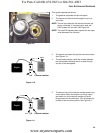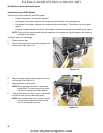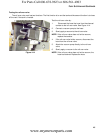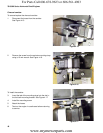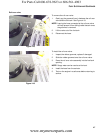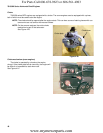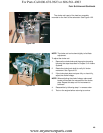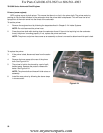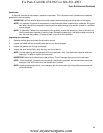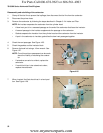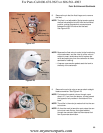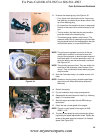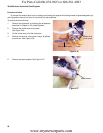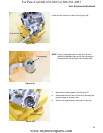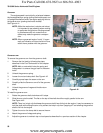FUEL SYSTEM AND GOVERNOR
51
Carburetors
If diagnosis indicates a fuel problem, inspect the carburetor. This is important even if problems are identified
elsewhere in the fuel system.
IMPORTANT: the fuel must be tested for alcohol content before diagnosing anything else on the engine.
NOTE: It is important to perform a compression or leak down test before condemning a carburetor. An engine
can have a borderline compression reading and not create enough of a vacuum to draw in a sufficient
fuel/air charge.
NOTE: To determine if border-line compression is the problem; remove the spark plug. Squirt a little bit of oil
into the combustion chamber to seal the rings. Reinstall the spark plug. If the engine starts and runs ok,
then that was the problem. If it does not start, move on to the carburetor.
Inspecting the carburetor
1. Remove the float bowl and check for dirt and/or varnish.
2. Inspect the needle valve and needle valve seat for dirt and/or damage.
3. Inspect the gaskets and O-rings for damage.
4. Inspect the vents and orifices, verify that they are free of debris.
NOTE: If a little cleaning and new gaskets will fix the carburetor, do it. If the carburetor requires extensive
cleaning; it is better to replace the carburetor.
IMPORTANT: Never try to mechanically clean orifices. That will damage them and ruin the carburetor.
NOTE: The jet markings (if present) may be used for identification purposes, but the technician should not
attempt to infer orifice sizes from the identification numbers.
NOTE: Installing the wrong main jet, or a carburetor with the wrong main jet will produce performance and
emissions issues.
For Parts Call 606-678-9623 or 606-561-4983
www.mymowerparts.com



